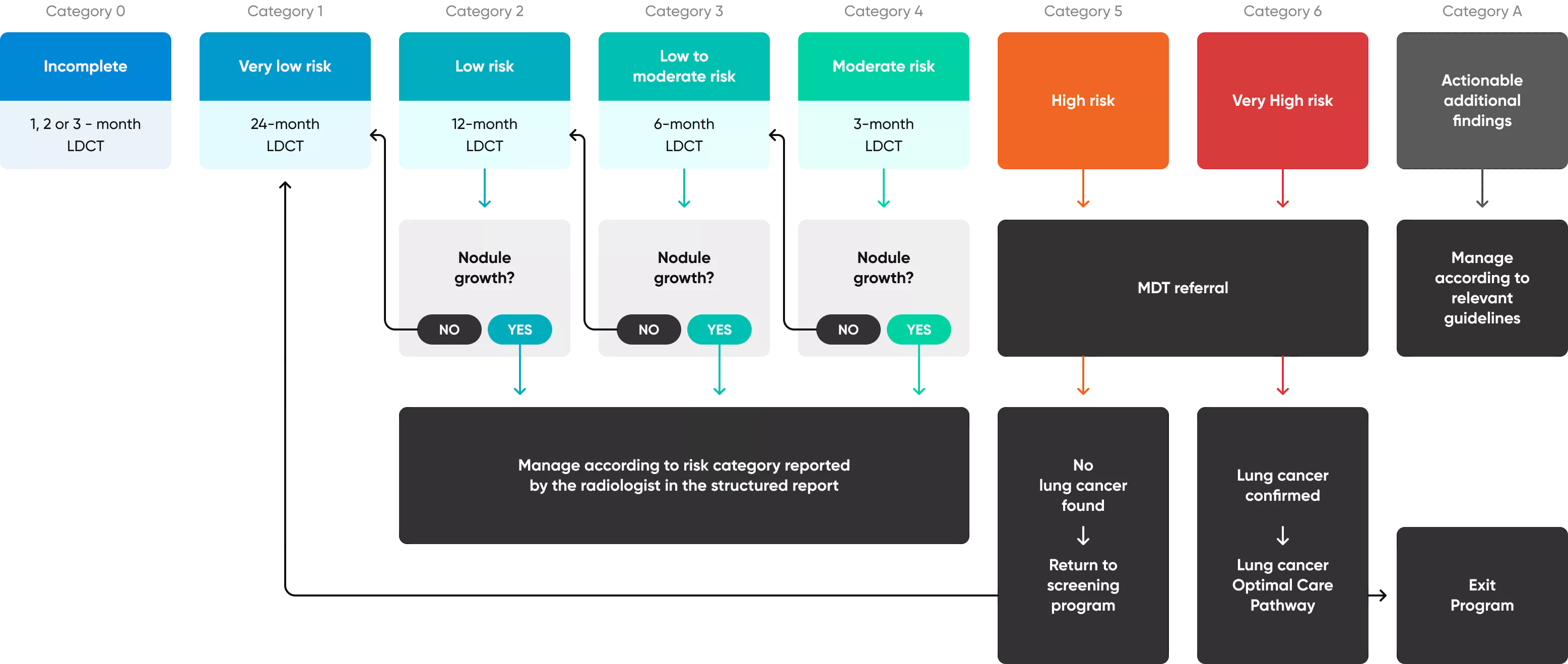Why Early Detection of Lung Cancer Matters Now – Australia’s Reality and Challenge
Lung cancer remains the leading cause of cancer-related death in Australia. In 2022 alone, around 9,000 Australians lost their lives to lung cancer, resulting in an estimated economic burden of AUD 448 million annually. Because symptoms often appear only in advanced stages, treatment is frequently delayed. Yet, if detected early, the 5-year survival rate can reach 60–90%.
Until now, Australia lacked a nationwide, structured screening system for lung cancer. To address this gap and improve early detection rates, the Australian government officially launched the National Lung Cancer Screening Program (NLCSP) on July 1, 2025.
What Is the NLCSP? A Nationwide Lung Cancer Screening Initiative
The National Lung Cancer Screening Program (NLCSP) aims to reduce lung cancer mortality by offering low-dose computed tomography (LDCT) scans to high-risk individuals who show no symptoms. Expected to save more than 500 lives annually, the NLCSP marks a critical milestone in Australia’s fight against lung cancer.
Am I Eligible for Lung Cancer Screening?
You may qualify for free screening if you meet all the following criteria:
- Age: 50 to 70 years
- Smoking history: At least 30 pack-years (pack-years = cigarettes/day ÷ 20 × years smoked)
- Smoking status: Current smoker or quit within the past 10 years
- Asymptomatic: No signs such as persistent cough, coughing up blood, or breathing difficulty
Eligibility is typically assessed by a general practitioner (GP) or Aboriginal health worker, followed by a screening referral if criteria are met.

How Does Screening Work? Process, Cost, and Registration
- Method: Low-dose CT (LDCT) scans are fast, painless, and expose patients to less radiation than standard CTs.
- Frequency: Eligible participants are invited for screening once every two years.
- Cost: Fully covered under Medicare (no out-of-pocket expenses).
- MBS Items: New Medicare Benefits Schedule items (57410, 57413) have been added to support this service.
- Registration: Participants are registered under the National Cancer Screening Register (NCSR), which provides reminders and updates.
Opportunities and Challenges Ahead: What the NLCSP Faces
While the NLCSP brings significant promise, it must also address real-world implementation challenges:
Potential Benefits
- Improved early detection rates and reduced mortality
- Higher treatment success through early-stage diagnosis
- Reduced burden on the healthcare system
Key Challenges
- Access disparities: Rural and remote areas require mobile CT solutions to improve access
- Workforce shortage: Limited availability of radiologists and overburdened GPs
- False positives: Risk of unnecessary tests or invasive follow-ups
- Stigma and fear: Smoking-related stigma and fear of diagnosis may reduce participation
- Indigenous health gap: Co-design approaches are vital, especially for Aboriginal and Torres Strait Islander populations with higher mortality rates
Lung Cancer Screening Powered by AI: Insights from Australia and Germany
As CT scan volume rises, the need for fast and accurate analysis has brought AI imaging technologies to the forefront. AI supports radiologists by automating key tasks such as:
- Detecting lung nodules
- Assigning Lung-RADS categories
- Tracking lesion changes over time
- Generating structured reports
AI integration can enhance diagnostic accuracy and efficiency, especially in under-resourced regions, and reduce turnaround time for results.
Germany has emerged as a global benchmark. On July 1, 2024, it announced a national regulation that strongly recommends AI-based image analysis in its lung cancer screening program. Under this model, AI performs the first-read, followed by radiologist review and validation.
This system was built upon the success of the HANSE Project, a large-scale pilot study demonstrating AI’s safety and clinical value. AI-enabled institutions now receive financial incentives for adoption, encouraging wide-scale implementation.
Australia and other countries can look to Germany’s model as a reference for building scalable, AI-integrated lung cancer screening frameworks.
A Healthier Australia Starts with Action
The NLCSP represents more than just a health policy—it is a transformative step toward saving lives and closing healthcare equity gaps. Its success depends on the combined efforts of the government, healthcare professionals, communities, and every individual.
Smoking remains the leading risk factor for lung cancer. Quitting smoking is still the most effective preventive measure. Take the first step toward a healthier future—learn more about lung cancer screening today.



 List
List


